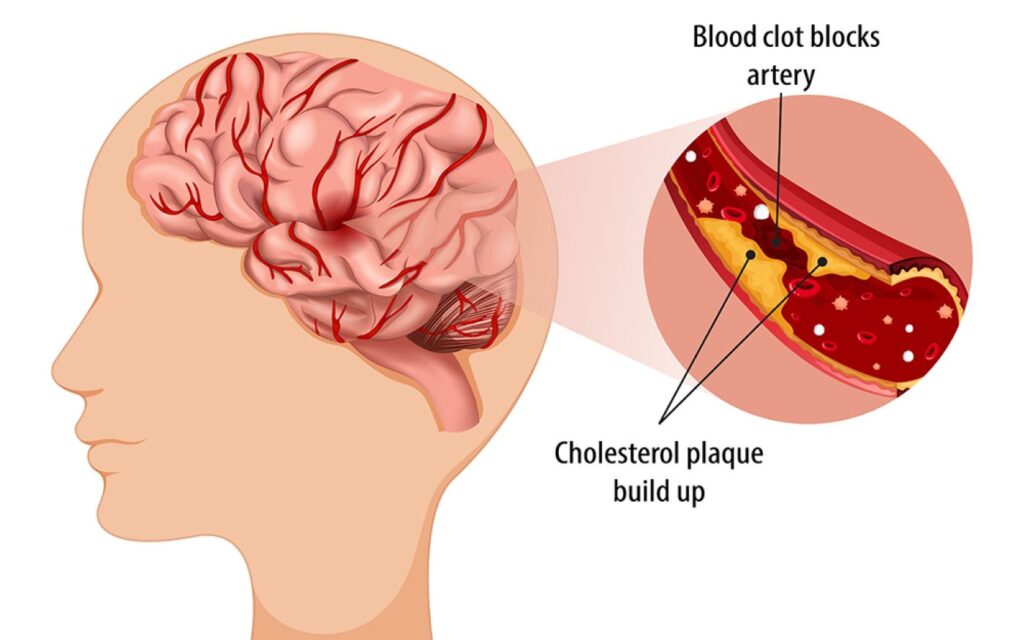Health Conditions
Discover How to Safeguard Yourself Against Strokes
It covers essential topics such as understanding the different types of strokes, identifying common risk factors, and discussing the role of diet, exercise, and medication in stroke prevention.
Strokes are a serious medical disease that can have a devastating impact on people and their families. The good news is that strokes can often be avoided with healthy lifestyle choices and preventative efforts. In this article, we will look at effective ways for preventing strokes and maintaining good brain health.
Understanding Strokes and Their Risk Factors
Strokes occur when blood flow to the brain is disturbed, either due to a blockage or a burst vessel. This interruption deprives the brain of oxygen and nutrients, causing brain cell damage and possibly long-term impairment or death. Understanding the risk factors for strokes is critical in preventing them.
There are two types of strokes: ischemic and hemorrhagic. Ischemic stroke are caused by a blockage in a blood vessel that supplies the brain, whereas hemorrhagic stroke happen when a blood vessel in the brain ruptures. Both types of strokes are preventable by addressing common risk factors.

The Importance of Prevention in Stroke Management
Strokes can have devastating effects on a person’s quality of life, thus everyone should work to prevent them. Individuals who follow preventive measures can dramatically lower their risk of having a stroke while also improving their general health and well-being.
Prevention is especially important for people who have already had a stroke, as they are more likely to have another one. Stroke survivors can enhance their quality of life and lower their odds of having another stroke by effectively managing risk factors and implementing positive lifestyle adjustments.
Lifestyle Changes for Stroke Prevention
Lifestyle has a substantial impact on stroke prevention. Making healthy decisions and developing positive routines can help reduce the incidence of strokes.
Diet and Nutrition for Stroke Prevention
A balanced diet is a key component in stroke prevention. Consuming a range of nutrient-dense foods can assist preserve brain function and lower the risk of strokes. It is recommended to eat a diet rich in fruits, vegetables, whole grains, and lean proteins yet low in saturated fat.
Consuming foods high in omega-3 fatty acids, such as fatty fish, nuts, and seeds, can also help avoid strokes. These good fats have been found to lessen inflammation and the risk of cardiovascular illnesses, such as strokes.

Exercise and Physical Activity for Stroke Prevention
Regular physical activity is not only necessary for keeping a healthy weight, but it also helps avoid strokes. Moderate-intensity cardiovascular exercise, such as brisk walking, swimming, or cycling, for at least 150 minutes per week can reduce the risk of strokes.
Physical activity promotes cardiovascular health, lowers blood pressure, and lowers the chance of acquiring other chronic illnesses including diabetes and high cholesterol. Furthermore, doing strength training activities twice a week can improve general fitness and lower the risk of stroke.
Managing Underlying Health Conditions for Stroke Prevention
Managing underlying health issues is critical for stroke prevention. High blood pressure, high cholesterol, and diabetes all raise the risk of strokes. Individuals can minimize their risk of stroke by properly managing these illnesses with medication, lifestyle adjustments, and regular check-ups.
It is critical to collaborate closely with healthcare providers to create a personalized treatment plan that addresses individual health concerns. Blood pressure, cholesterol, and blood sugar levels must be monitored on a regular basis to ensure proper treatment.

Medications and Medical Interventions for Stroke Prevention
In some circumstances, drugs and medical procedures may be required to avoid strokes. Healthcare providers may prescribe pharmaceuticals to treat underlying health problems, such as antihypertensive drugs for high blood pressure or statins for high cholesterol.
Healthcare practitioners may offer antiplatelet drugs, such as aspirin, to persons at high risk of strokes to lower the chance of blood clots. In some circumstances, surgical procedures, such as carotid endarterectomy or angioplasty, may be required to remove blockages or repair damaged blood arteries.
Recognizing Early Warning Signs and Symptoms of Strokes
While prevention is essential, it is equally critical to be aware of the early warning signs and symptoms of strokes. Prompt recognition and immediate medical intervention can considerably increase the likelihood of a successful outcome.
Sudden weakness or numbness in the face, arm, or leg, particularly on one side of the body, are common warning signs of strokes. Other symptoms include difficulty speaking or understanding speech, abrupt confusion, vision problems in one or both eyes, severe headaches, and dizziness or loss of balance.

Promoting Stroke Awareness and Education
Raising awareness about strokes and educating the public about prevention is critical to lowering the occurrence and effect of this medical illness. Healthcare organizations, community groups, and individuals can all help raise stroke awareness through educational campaigns, events, and resources.
We can empower people to take proactive efforts toward stroke prevention and, ultimately, save lives by increasing awareness about risk factors, preventive measures, and identifying the indications of a stroke.
Conclusion
Everyone should prioritize the prevention of strokes. Individuals can dramatically lower their risk of strokes and enhance their general health and well-being by learning about the risk factors and making good lifestyle adjustments.
Managing underlying health issues, eating a good diet, engaging in regular physical activity, and getting medical advice when necessary are all important steps in stroke prevention. Recognizing the early warning signs and symptoms of strokes, as well as raising awareness, can help to reduce the severity of this medical issue.
Remember that strokes may often be avoided, and taking proactive efforts to prevent them is an investment in your long-term health. We may protect ourselves and our loved ones from the devastation caused by stroke by prioritizing its prevention.
Together, let us work toward a world in which strokes are uncommon and people can live their lives to the fullest without fear of this preventable ailment.
Trusted Health, Wellness, and Medical advice for your well-being



